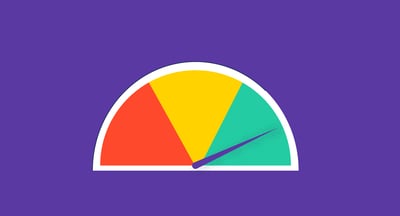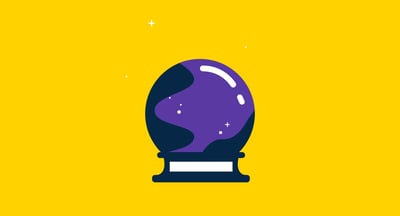February 14, 2020
 by Mary Clare Novak / February 14, 2020
by Mary Clare Novak / February 14, 2020
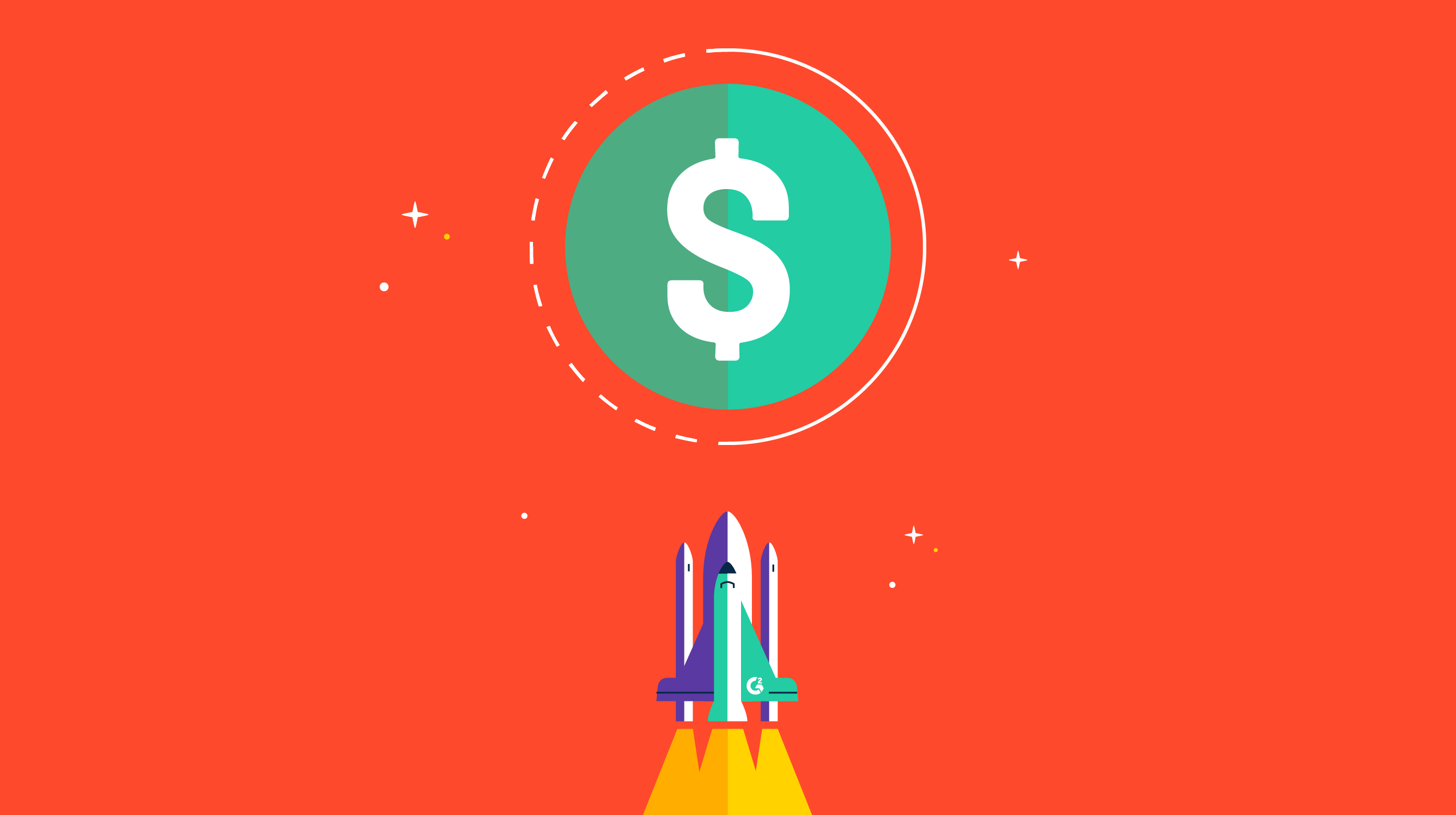
Your time is valuable, and you want to make the most of it.
In everyday life, there isn’t exactly a method to calculate how fruitful we are with our time. Yes, we complete tasks and feel accomplished, but what about the rate of success for our efforts?
Because time literally is money in business, sales teams have devised a way to put an exact dollar amount on one day’s work. This captivating value is called sales velocity.
Sales velocity measures how quickly your business is making money. It analyzes how fast deals are moving through your sales pipeline and generating revenue. Determining sales velocity shows businesses how much revenue they can expect to make in one day or over a certain period of time.
Businesses track this sales metric to see how quickly they are moving customers down the pipeline. Sales velocities from different time periods or before and after changes in processes are often compared to see if differentiating factors had a positive or negative effect on the sales team’s efficiency.
Your team’s sales velocity speaks directly to the health of a business and its ability to succeed and grow.
If you’re efficiently moving prospects through your sales pipeline and converting them into closed-won deals, you’re going to have a higher sales velocity. The faster you sell, the better.
However, anyone in sales knows that getting customers to say “yes” is quite the process. And boy is it a bumpy road. Understanding the rate at which people move through your pipeline will help teams pick out which steps in the sales process are working and which ones are causing customers to exit.
Measuring sales velocity and factors that affect it helps businesses optimize their processes to ultimately become more successful sellers.
Your team, company, and the industry in which you work are all susceptible to change. Tracking sales velocity after any of these developments will show whether they had a positive or negative effect on your business. Either way, it offers a valuable lesson.
There are four key factors that come into play when measuring sales velocity: the number of opportunities in the pipeline, the average size of each deal, how often reps are closing won deals, and the length of your sales cycle.
By tracking these four metrics, you can measure sales velocity, observe how it changes over time, and find ways to optimize your sales process to sell faster.
Within your sales pipeline, you are going to have a certain number of opportunities. An opportunity is also known as a qualified lead. Sales reps will use the BANT framework, which stands for budget, authority, need, and time, to determine whether or not the lead is worth pursuing.
The BANT method asks four key qualifying questions:
Ensuring these leads are well qualified is crucial. A smaller amount of good leads is better than a large amount of bad leads. If your pipeline is stuffed full of bad leads, your sales velocity calculation won’t be accurate.
The more specific value you need to look at when calculating sales velocity is how many qualified leads your team can work with in a given time frame. Some businesses will do this with the amount of opportunities overall, or break it down by rep, territory, or solution.
To find the number of opportunities in a pipeline, simply count how many leads have been qualified as worth pursuing within the specified time frame.
Your average deal size refers to the average dollar value for a sale. This metric is a lot more relevant for software as a service (SaaS) companies or businesses that use a subscription pricing model, where customer lifetime value is one of the most important key performance indicators for a sales team.
A company’s average deal size is the only factor of sales velocity that directly correlates to money, and therefore, profits.
Although it isn’t a key factor in sales velocity, businesses also need to consider customer acquisition cost when analyzing average deal size. If the revenue being generated doesn’t overpower the amount it costs to bring in and retain new customers, it will hurt profitability.
To calculate average deal size, designate a time period (month, quarter, etc.) and divide the total amount generated by the number of deals in that time frame.
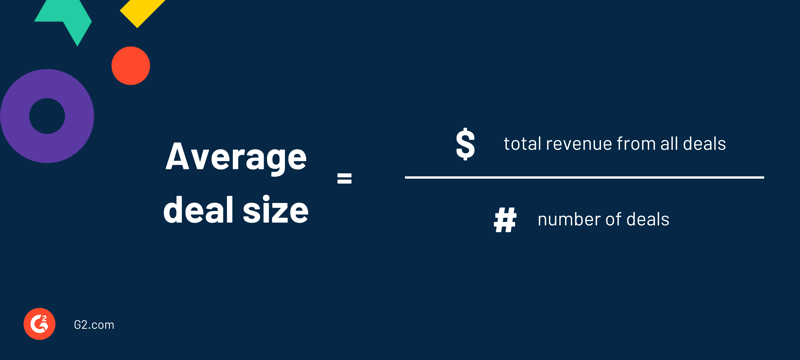
Also known as the win rate, your conversion rate is the percentage of prospects that make it all the way down the pipeline and become a paying customer.
Your business’ conversion rate is a good indicator of how well leads have been qualified, but it also shows the success of your current approach to selling. There might be a common point in the pipeline where leads are frequently exiting, and that’s worth investigating.
To calculate your sales conversion rate, divide the amount of closed-won deals by the amount of customers you’ve interacted with.
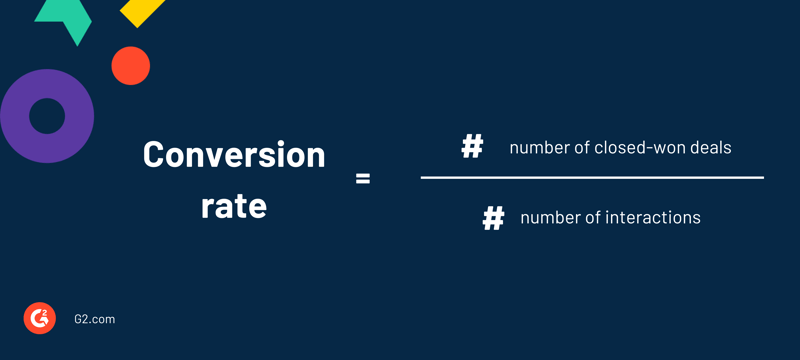
Also known as pipeline length, your sales cycle length is the average amount of time it takes for a prospect to become a buying customer. The number of steps in the sales process, cost, and complexity of the solution being offered will determine the length of your sales cycle.
Both sales reps and customers would prefer the selling process to be as quick and seamless as possible.
However, this doesn’t mean things should be rushed. You don’t want to force potential customers into making a buying decision they aren’t ready for, but you also don’t want to keep them waiting. Be mindful of the pace at which each customer is moving and adapt your approach to it.
To calculate your average sales cycle length, take the total number of days for all deals and then divide it by the number of deals for that specific time period.

Consistency is key when measuring sales velocity. Make sure you are using the same definitions for opportunities, deal size, and conversion, and the same time parameters for your sales cycle. If you aren’t consistent with those values, your sales velocity calculations will be inaccurate.
The sales velocity equation is actually quite simple.
To calculate sales velocity, multiply the number of opportunities, average deal value, and win rate all together, and then divide that number by the length of your average sales cycle.
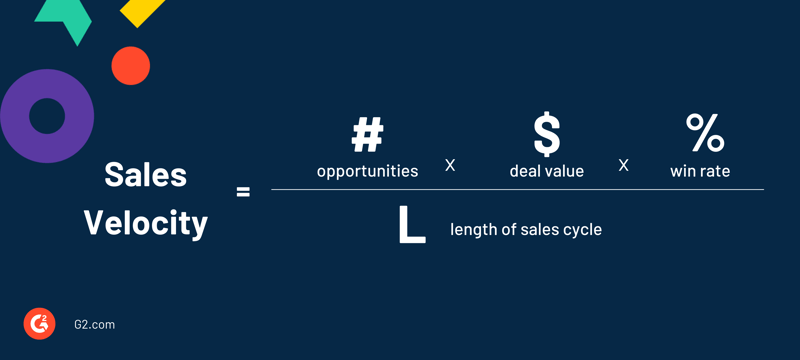
The result of the equation is your business’ sales velocity, which is represented as a dollar amount. That dollar amount represents the amount of money that the business makes in a day.
Let’s put that equation to work with an example from a business called Fake Company 500.
Fake Company 500 has 50 opportunities in the pipeline, their average deal value is $25,000, and they have a 10% win rate. Their average length of their sales cycle is 50 days.
Based on the factors of sales velocity, Fake Company 500 makes an average of $2,500 every day.
When calculating sales velocity, some organizations will take it a step further and separate their small, mid-market, and enterprise pipelines and measure based on the values associated with that sector.
This way, they can see what company size is most suited for their business. They can prioritize that group, and rework their selling strategy for the groups with which they are struggling.
It can be easy to lose sleep over sales velocity. While it’s important to measure, that single calculation can’t reveal the true and overall health of your entire business. All of these numbers need to be put into context.
A best practice for measuring sales velocity is to do it in regular intervals and compare past and present results. This is especially important to do after changes in sales strategies or processes have been made. This way, you can see the effects and determine whether or not the modification is good for your bottom line.
Improving sales velocity is a common goal for businesses. There’s nothing wrong with trying to sell faster and generate more revenue in a shorter period of time.
Once a business has accurately calculated their sales velocity, they can improve it by increasing the number of opportunities, average deal size, and win rate, or by decreasing their sales cycle length. If one improves, your sales velocity will increase.
Let’s go over how to tackle each factor one at a time.
One way to boost your sales velocity is by increasing the number of opportunities in your sales pipeline. The distinction between leads and opportunities is important to point out here.
A lead is a potential customer who has expressed interest in your business by interacting with it in some way or another (website, blogs, etc.). Leads need to be qualified as worth pursuing by sales reps.
An opportunity is a qualified lead. This means that a rep has used the BANT framework to ensure the lead has the appropriate budget, authority, need, and time frame for your solution.
Having a pipeline full of leads isn’t necessarily bad, but it can present issues if the leads aren’t qualified well. Focus more on those that are right for your solution.
To increase the number of good opportunities in your pipeline, hone in on the quality of leads rather than quantity. It’s better to have fewer high-quality leads than many low-quality leads.
Also, be realistic. Stick to what’s working for your business. If your solution works best for small businesses, don’t suddenly approach a large corporation in hopes of making a sale right away. There will always be times to expand your customer base, but it’s important to remain realistic while doing so.
Of course you think your solution is the best one on the market, but real value is shown by how much customers are willing to spend on it. Boosting your average deal size is all about accurately connecting value and price.
One of your primary actions should be focusing on the needs and pain points of the customer when selling. Tailor your presentation to each customer and introduce your solution in a way that shows it can meet their standards and relieve their pain points. Customers should see you as a consultant helping in their search for a valuable solution, not a salesperson trying to hit their quota.
Also, make sure you are being smart with your time. Don’t rush anyone through the process, but place more time and value on larger opportunities with bigger companies. If you close your smaller deals faster, you’ll be able to dedicate more time to those that will have a bigger impact.
Lastly, and perhaps most importantly, create and nurture relationships. Building solid, mutually beneficial relationships with customers will do a lot for your average deal size. This is easy with CRM software, which allows users to manage customer relationships, offering more value to both buyers and sellers.
There are plenty of reasons for someone to exit your sales pipeline. Whether you lose your customers to a competitor or their lack of motivation to resolve a pain point, figuring out why your customers are or aren’t buying is crucial when optimizing your conversion rate.
Make sure you conduct a deep sales discovery towards the beginning of your interaction with the customer. Understand why the customer is seeking a solution and present your business as the answer. Match all their needs with a particular attribute of your solution. Remember to point out the dangers of not taking action as well as the benefits of resolving the issue.
Remember that your sales process and the buyer journey follow the same path, but aren’t identical.

Be patient with customers as they make their way through the journey to making a buying decision.
Analyze your current sales process to discover where customers are exiting. The problem might be that you need different lead qualification standards or that your reps need more value demonstration practice. Find areas of struggle in your sales process, identify the problem, and take action to resolve it.
No deal is the same, and the amount of time you spend selling to each customer is going to differ.
Bigger businesses have more requirements and stakeholders to convince, while smaller and less established businesses can make faster decisions. Understanding the size of a business and their urge to find a solution will give you an idea of how quickly you can sell to them.
Avoid being slow to respond when a customer reaches out to you. When a lead is qualified, reach out right away. If you are further along in the sales process and they are reaching out to present some objections, make it your priority to get them the information they need as swiftly as possible.
Another way to shorten your sales cycle is by having relevant content ready to be distributed. Blogs, how-to guides, and product overviews should all be accessible to customers. This will save time by avoiding going back and forth with questions and answers.
If you feel as if your sales pipeline is slowing down, it’s probably slowing down. Trust your gut and take action as soon as possible.
A full pipeline doesn’t necessarily mean a fruitful pipeline. Pay close attention to sales velocity and the four key factors that affect it. Make sure to measure it regularly and note anything that would’ve affected it.
Once you know what makes your sales velocity spike, you’re bound to find success.
Sometimes, identifying potential buyers is half the battle of selling. Check out G2’s Seller Solution and use buyer intent data to discover companies that are researching your solution.
Mary Clare Novak is a former Content Marketing Specialist at G2 based in Burlington, Vermont, where she is explored topics related to sales and customer relationship management. In her free time, you can find her doing a crossword puzzle, listening to cover bands, or eating fish tacos. (she/her/hers)
It’s no secret that our world is obsessed with efficiency.
 by Mary Clare Novak
by Mary Clare Novak
A gaze into the future would be a good leg up for businesses everywhere.
 by Mary Clare Novak
by Mary Clare Novak
For sales teams, the ideal customer journey is a never-ending pursuit.
.jpg) by Aayushi Sanghavi
by Aayushi Sanghavi
It’s no secret that our world is obsessed with efficiency.
 by Mary Clare Novak
by Mary Clare Novak
A gaze into the future would be a good leg up for businesses everywhere.
 by Mary Clare Novak
by Mary Clare Novak
